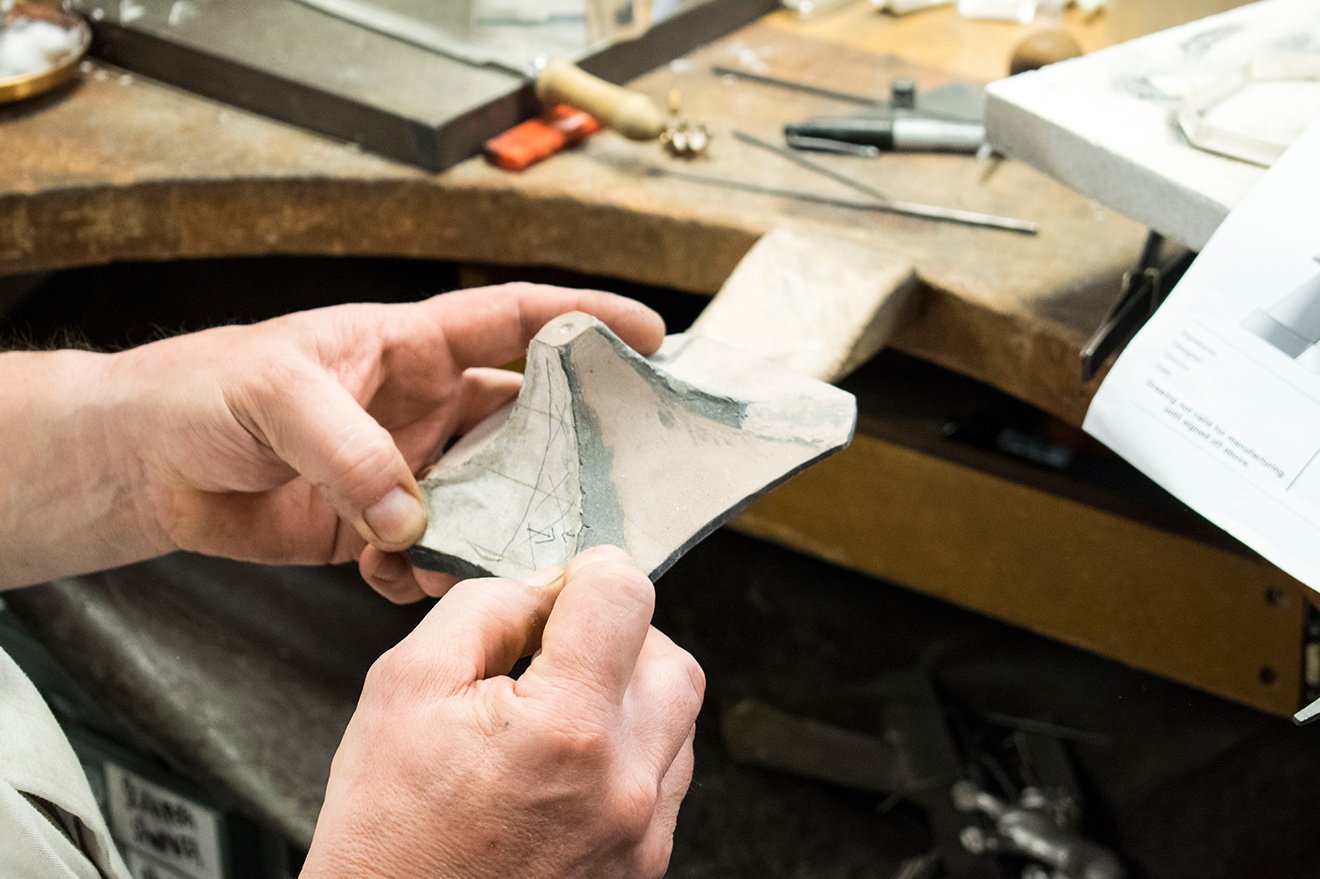Workshop Tour: Asprey
Going behind the scenes of one of London's most iconic silverware brands to discover how some of their most recognisable pieces are made.
Known across the globe as a manufacturer of luxurious jewellery, silverware, home accessories and leather goods, Asprey has a long and rich history that spans all the way back to 1781. Located on New Bond Street, I was invited to the workshops to meet with the designers and creators behind the impressive collections, discovering the intricate processes and level of skill that goes into every product before it makes its way to the store.
Walking through the store and passing the perfectly polished silverware on display, it can be hard to imagine the lengthy process that each piece has to go through before it is ready to be purchased. Located directly above the New Bond Street showroom is a collection of workshops where talented individuals design and craft the silverware, leather goods and jewellery that make up the Asprey collection. It is time to discover how these pieces are created.
With such complex and often intricate parts to many of the silverware designs, it is a familiar practice to create a product in multiple sections which are later fused together to complete the final item. The first part of the tour showcased the polishing of several segments, from handles to casings that make up only a small part of a design. Some individuals may only ever work on a particular part of a product so it is imperative that each piece is created with exact precision so that it can be effortlessly connected to the next.
This idea that several people may have worked to create one single product is also a testament to the level of craftsmanship and skill that goes into an Asprey product, one that when you look closely, creates a story and journey of a product before it has even made it home.
The Pagoda Cocktail shaker was described as one of the most complex designs to craft due to its tapering shape, multiple segments and a wide range of angles used. As seen above, it was demonstrated just how many pieces needed to be added to the main body to develop the cocktail maker's shape before being polished and coloured enamel detailing added.
When many people think of the Asprey brand, the animal head decanters come to mind. These iconic works of art have expanded over the years to include a huge range of animals from badgers to foxes and dogs. One of the most impressive discoveries was just how each animal comes to life in the workshop. Using drawings, photographs and measurements, each animal head starts life as a sculpted wax model. Details can be changed and scales can be manipulated before the final head goes into production, creating a mould for all future decanter stoppers to be cast from.
Moving into the leather workshops, I was mesmerised by the exotic skins, beautiful textures and extravagant colours on display across the room. The skins are used for creating a huge array of products available at Asprey, anything from passport covers to keyrings, handbags and fashion accessories.
It was fascinating to see the processes that a hide can go through before it reaches the final stage. Some are coloured with vivid dyes whilst others are polished to produce a luxurious sheen. Depending on the type of leather and what pattern is produced, it will decide exactly where that section belongs in a design, such as a spine on a piece of shagreen will always be displayed centrally, meaning that multiple pieces may have to be used to create the desired look.
Matching cotton, embellishing and decorative touches are all carefully planned out to the finest detail, enabling a design to be crafted to the highest standard. Items can often be customised and the team has access to a wide range of additional finishes, materials and equipment to ensure that a product can be completed to the customer's full requirements, from a colour change to the inclusion of a loved one's initials.
Whilst many of us can pick up a beautiful creation and admire its design, quite often it is the small details and the hardest of work that can go unnoticed. This is the sign of the finest craftsmanship, one that would be immediately noticed if it was not there.













